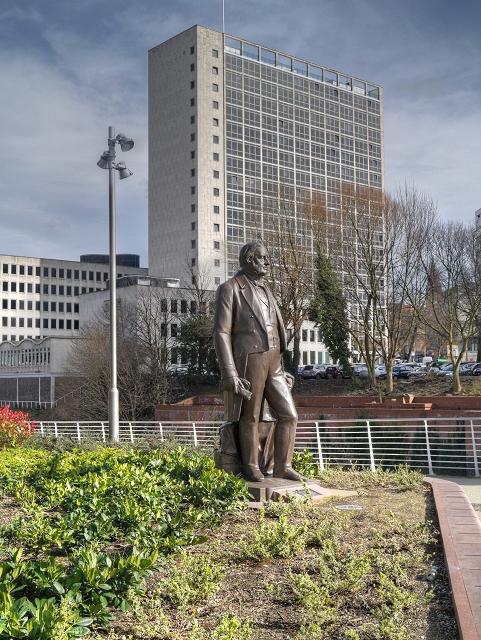Joseph Brotherton Statue on New Bailey Street
Introduction
The photograph on this page of Joseph Brotherton Statue on New Bailey Street by David Dixon as part of the Geograph project.
The Geograph project started in 2005 with the aim of publishing, organising and preserving representative images for every square kilometre of Great Britain, Ireland and the Isle of Man.
There are currently over 7.5m images from over 14,400 individuals and you can help contribute to the project by visiting https://www.geograph.org.uk

Image: © David Dixon Taken: 19 Mar 2014
The bronze statue to Joseph Brotherton on New Bailey Street, overlooking the Salford bank of the River Irwell. The tall buildings in the background are in Manchester. Joseph Brotherton (1783 – 1857) was a reforming British politician, Nonconformist minister and pioneering vegetarian. In 1789, His family moved to Salford where he later established a cotton and silk mill. In 1819, aged thirty-six, Brotherton retired from the family business in order to devote his energy to his ministry, using his position to actively improve the conditions of workers and campaign for reforms. Among his achievements were the building of schools, the opening of a lending library and the establishment of a fund to support the victims of the Peterloo Massacre (http://en.wikipedia.org/wiki/Peterloo_Massacre ). He was also an overseer of the poor and a justice of the peace. In 1832 Joseph Brotherton was elected as Salford's first Member of Parliament serving in the House of Commons for the next twenty-four years. Brotherton was so popular with the people of Salford that he was re-elected five times and he stood unopposed at the elections of 1847 and 1852. In parliament he campaigned against the death penalty, for the abolition of slavery and for free non-denominational education. He actively supported the Municipal Corporations Bill, which led to Manchester and Salford having democratically-elected councils. He took an interest in the facilities provided by the new municipalities, and was largely responsible for the opening of Peel Park, Salford and Weaste Cemetery. After his sudden death from a heart attack in 1857, the people of Salford started a “Joseph Brotherton Memorial Fund” from which they commissioned a bronze statue of Brotherton in Peel Park. The statue was dismantled in 1954 and sold into private ownership in 1969. It was purchased by Manchester City Council in 1986, and was resited at Riverside Walk, overlooking the River Irwell towards Salford. See also Image http://www.spartacus.schoolnet.co.uk/PRbrotherton.htm Joseph Brotherton Biography

